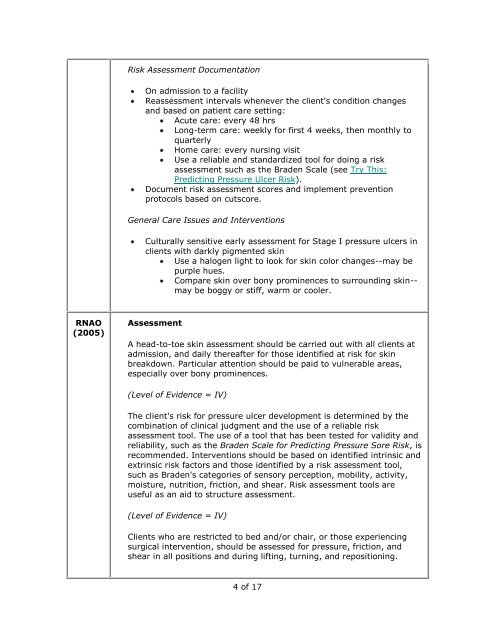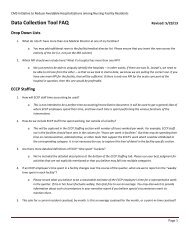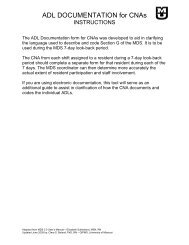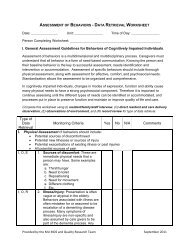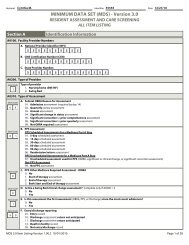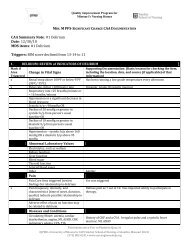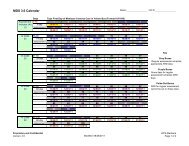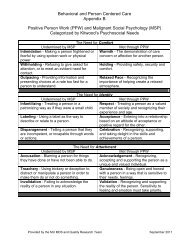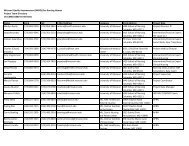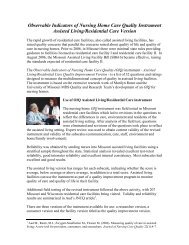National Guideline Clearinghouse (NGC). Guideline synthesis
National Guideline Clearinghouse (NGC). Guideline synthesis
National Guideline Clearinghouse (NGC). Guideline synthesis
Create successful ePaper yourself
Turn your PDF publications into a flip-book with our unique Google optimized e-Paper software.
Risk Assessment Documentation<br />
On admission to a facility<br />
Reassessment intervals whenever the client's condition changes<br />
and based on patient care setting:<br />
Acute care: every 48 hrs<br />
Long-term care: weekly for first 4 weeks, then monthly to<br />
quarterly<br />
Home care: every nursing visit<br />
Use a reliable and standardized tool for doing a risk<br />
assessment such as the Braden Scale (see Try This:<br />
Predicting Pressure Ulcer Risk).<br />
Document risk assessment scores and implement prevention<br />
protocols based on cutscore.<br />
General Care Issues and Interventions<br />
Culturally sensitive early assessment for Stage I pressure ulcers in<br />
clients with darkly pigmented skin<br />
Use a halogen light to look for skin color changes--may be<br />
purple hues.<br />
Compare skin over bony prominences to surrounding skin--<br />
may be boggy or stiff, warm or cooler.<br />
RNAO<br />
(2005)<br />
Assessment<br />
A head-to-toe skin assessment should be carried out with all clients at<br />
admission, and daily thereafter for those identified at risk for skin<br />
breakdown. Particular attention should be paid to vulnerable areas,<br />
especially over bony prominences.<br />
(Level of Evidence = IV)<br />
The client's risk for pressure ulcer development is determined by the<br />
combination of clinical judgment and the use of a reliable risk<br />
assessment tool. The use of a tool that has been tested for validity and<br />
reliability, such as the Braden Scale for Predicting Pressure Sore Risk, is<br />
recommended. Interventions should be based on identified intrinsic and<br />
extrinsic risk factors and those identified by a risk assessment tool,<br />
such as Braden's categories of sensory perception, mobility, activity,<br />
moisture, nutrition, friction, and shear. Risk assessment tools are<br />
useful as an aid to structure assessment.<br />
(Level of Evidence = IV)<br />
Clients who are restricted to bed and/or chair, or those experiencing<br />
surgical intervention, should be assessed for pressure, friction, and<br />
shear in all positions and during lifting, turning, and repositioning.<br />
4 of 17


